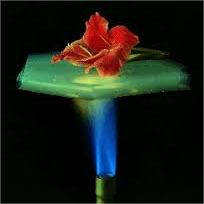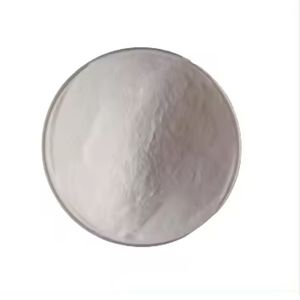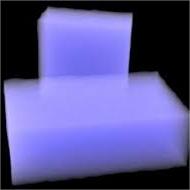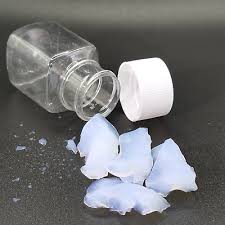Professional industry ceramic supplier, silicon nitride, silicon carbide, aluminum nitride and any other kinds of ceramics.
PRODUCT PARAMETERS
Description
Overview of glass wool blanket glass wool roll fiberglass wool aerogel insulation materials
glass wool blanket glass wool roll fiberglass wool aerogel insulation materials is a synthetic porous ultralight material derived from a gel, in which the liquid component has been replaced with a gas. The result is a solid with extremely low density and low thermal conductivity, often nicknamed “frozen smoke.” Despite its fragile appearance, it can be engineered to be remarkably strong, holding the title of the world’s best insulating solid material.
Features of glass wool blanket glass wool roll fiberglass wool aerogel insulation materials
-
World’s Lowest Thermal Conductivity: Provides unparalleled insulation performance, far superior to traditional materials.
-
Extremely Low Density: One of the lightest solid materials known to man, with a composition of up to 99.8% air.
-
High Surface Area: Possesses an incredibly large internal surface area, making it valuable for filtration and absorption applications.
-
Versatile Composition: Can be made from various materials, including silica, carbon, and metal oxides, each with unique properties.
-
Exceptional Porosity: Its nanoporous structure is responsible for its outstanding insulating capabilities.
Specifications of glass wool blanket glass wool roll fiberglass wool aerogel insulation materials
Glass wool insulation comes in different forms. You find it as blankets or rolls. These are flexible and easy to handle. Fiberglass wool is another common name for this material. It is made from recycled glass. Sand and other minerals are melted together. The melted glass is spun into fine fibers. These fibers trap air. Trapped air is a poor conductor of heat. This makes glass wool very good at stopping heat flow. It keeps buildings warm in winter. It keeps them cool in summer. This saves energy. It lowers heating and cooling costs. Aerogel is a different type of insulation. It is very lightweight. It offers excellent thermal performance too. Aerogel is often used in special applications.
Glass wool blankets and rolls have good fire resistance. They do not burn easily. This helps improve building safety. They are also excellent for sound control. The fibrous structure absorbs noise. It reduces sound transmission through walls, floors, and ceilings. This makes indoor spaces quieter and more comfortable. The material is non-corrosive. It does not harm pipes or metal structures. It resists moisture well. Moisture can ruin insulation performance. Glass wool generally avoids this problem. It does not promote mold or mildew growth. This contributes to healthier indoor air quality.
Installation is straightforward. The blankets or rolls can be cut to size. They fit snugly between studs, joists, or rafters. They fill cavities effectively. This prevents gaps where heat could escape. The material is durable. It does not settle significantly over time. This maintains its insulating power for years. Glass wool is made largely from recycled content. This makes it an environmentally friendly choice. Builders and homeowners choose it for its reliable performance. It provides effective thermal and acoustic insulation. It is a practical solution for many building needs.
Applications of glass wool blanket glass wool roll fiberglass wool aerogel insulation materials
Glass wool blankets are very common for home insulation. People put them in attics and walls. They stop heat from escaping in winter. They keep houses cooler in summer too. This saves energy and money. Builders use glass wool rolls between studs. They fit easily around pipes and wires. This seals gaps and prevents drafts. Fiberglass wool is another name for this material. It works the same way.
Factories use fiberglass wool insulation a lot. It protects pipes and boilers. It withstands high temperatures. Workers wrap equipment safely. Aerogel insulation is newer. It is thinner but very effective. People choose it where space is tight. Places like ductwork need thin layers. Aerogel fits well there. All these materials resist fire. They make buildings safer.
HVAC systems rely on this insulation. Ducts stay warm or cold as needed. Less energy gets wasted. Appliances like ovens use it inside. It protects outer surfaces from heat. Vehicles use insulation too. Cars have it under hoods. It quiens engine noise. Boats and RVs need it for comfort.
Sound travels easily through walls. Glass wool absorbs noise. Rooms become quieter. Offices use it in ceilings. Recording studios need sound control. These materials block unwanted noise. They improve living and working spaces.
Company Profile
Tanki New Materials Co.Ltd. focus on the research and development, production and sales of ceramic products, serving the electronics, ceramics, chemical and other industries. Since its establishment in 2015, the company has been committed to providing customers with the best products and services, and has become a leader in the industry through continuous technological innovation and strict quality management.
Our products includes but not limited to Aerogel, Aluminum Nitride, Aluminum Oxide, Boron Carbide, Boron Nitride, Ceramic Crucible, Ceramic Fiber, Quartz Product, Refractory Material, Silicon Carbide, Silicon Nitride, ect. please feel free to contact us.

Payment Methods
T/T, Western Union, Paypal, Credit Card etc.
Shipment Methods
By air, by sea, by express, as customers request.
5 FAQs of glass wool blanket glass wool roll fiberglass wool aerogel insulation materials
Glass wool insulation comes in rolls or blankets. It’s made from recycled glass and sand. You use it in walls, attics, and roofs. It stops heat from escaping or entering. It also helps block sound.
What is the R-value? R-value measures how well insulation resists heat flow. Higher numbers mean better insulation. Glass wool blankets offer good R-values. The exact number depends on thickness and density. A thicker blanket usually has a higher R-value. Check the product label for specifics.
Does it handle moisture? Glass wool itself doesn’t absorb much water. It’s not considered a vapor barrier though. Moisture can pass through it. You often need a separate vapor barrier. This is important in damp areas. It helps prevent condensation problems inside walls.
Is it safe to install? Yes, when you follow the instructions. Wear gloves, long sleeves, and safety glasses. The fibers can irritate skin and eyes. Use a mask to avoid breathing in dust. Work in a well-ventilated space. Clean up thoroughly after installing. Proper handling prevents most issues.
How does the cost compare? Glass wool insulation is usually very affordable. It offers good performance for the price. Aerogel insulation provides much higher R-values per inch. Aerogel costs significantly more. Fiberglass wool is a cost-effective choice for many projects. It balances performance and budget well.
REQUEST A QUOTE
RELATED PRODUCTS

actory Fabric 3mm 6mm Blanket Silica Aerogel Insulation

Knitted Single Jersey 65% Aerogel 35% Cotton Thermal Insulation fabric

UGOO Best ing Jackets Insulation Materials Hybrid Aerogels Dustproof 1MM Flexible Aerogel Clothing Aerogel Material

Aerogel Blanket Nano Insulating Material for Heat and Refrigerant Insulation

Construction heat insulation silica aerogel paint anti scalding nano paints and coatings low thermal conductivity coating layer



